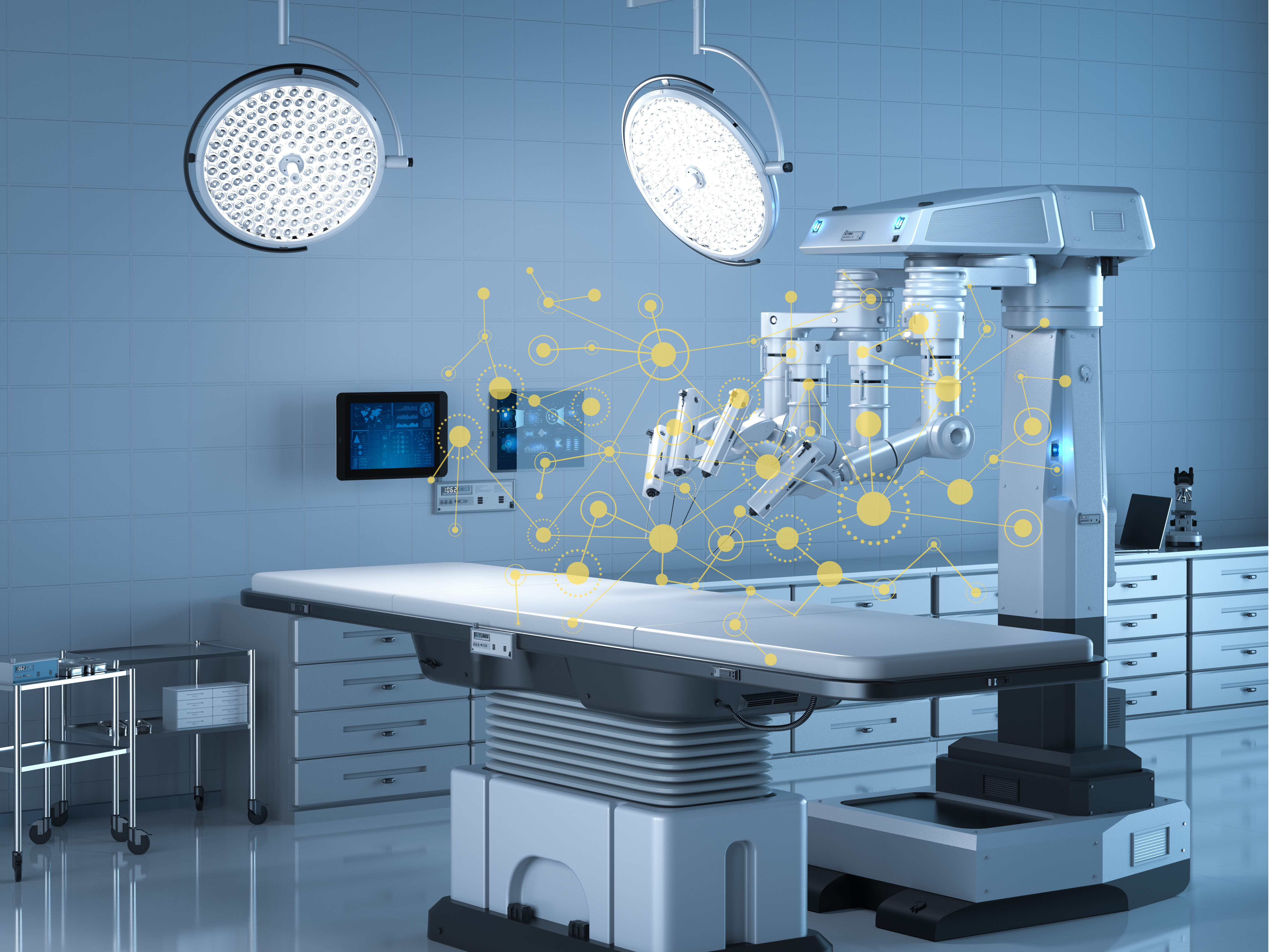Current Technology Solutions to Three Common Pain Points of Surgical Robotics
Medical companies are facing challenges in the adoption of surgical robotics technology. Low haptic feedback, reliability and constant maintenance, and complex and long training are common limitations. Innovative product design and software solutions are providing new opportunities to ease the adoption of this life-saving technology. Here's a quick overview of the common pain points:
- Haptic feedback: While robotic surgery has substantial benefits, one significant drawback is that robotic surgery cuts out almost all haptic
 feedback that traditional surgical procedures have.
feedback that traditional surgical procedures have. - Reliability: Constant maintenance and unplanned downtime not only causes reliability risks due to safety and accuracy issues but can cost organizations up to $700 per minute!
- Complex and long training: In addition to a general lack of academic training and steep learning curves, teams must undergo extensive training and become comfortable with the significant reduction of tactile cues and kinesthetic signals.
Current Technology Solutions
- Industrial Design & Product Redesign: Product design and redesign covers internal
technology and DFX for intuitive usage. While there are many possible values for X, the most common points of focus involve manufacturability, testabilit y, reliability, safety, serviceability, cost, and compliance - areas that can be defined, most often due to an issue that has arisen in a product. The Boston Engineering product development system encompasses DFX to ensure a smooth product launch and success in the marketplace. Boston Engineering has DFX knowledge and experience to address aspects and values of a product such as manufacturability, test, reliability, safety, serviceability, cost, and compliance with industry standards and government regulations. Our primary design capabilities include:
y, reliability, safety, serviceability, cost, and compliance - areas that can be defined, most often due to an issue that has arisen in a product. The Boston Engineering product development system encompasses DFX to ensure a smooth product launch and success in the marketplace. Boston Engineering has DFX knowledge and experience to address aspects and values of a product such as manufacturability, test, reliability, safety, serviceability, cost, and compliance with industry standards and government regulations. Our primary design capabilities include:
- Design for Manufacturability (DFM)
- Design for Assembly (DFA)
- Design for Reliability (DFR)
- Design for Serviceability (DFS)
- Design for Testability (DFT)
- Embedded Systems & Sensors: Improved sensors and sensing schemes can increase haptic feedback; the physical sensation humans receive through our sense of touch. Sensorial feedback to surgeons includes vibrations, lights, sounds, etc. Boston Engineering specializes in sensors - providing in-house capabilities supported by a fully developed quality process and product/project management proficiency to handle the complex new product development environment. The addition (or the improvement) of sensors within these robots provides direct feedback to the surgeons and doctors using these tools, directly impacting usability and effectiveness.
- Digital Solutions: Medical device companies are incorporating secure Industrial Internet of Things (IIoT) solutions to gain live product performance monitoring and to improve business operations. Real-time monitoring can limit downtime as pro
 gressing issues can be caught and fixed before a machine is out of service. Additionally, Augmented Reality (AR) is providing not only maintenance instructions and assistance but also training opportunities. When a maintenance issue arises, AR can be utilized to walk a tech through step-by-step visual instructions. Similarly, these experiences provide training opportunities with real-time and step-by-step visual.
gressing issues can be caught and fixed before a machine is out of service. Additionally, Augmented Reality (AR) is providing not only maintenance instructions and assistance but also training opportunities. When a maintenance issue arises, AR can be utilized to walk a tech through step-by-step visual instructions. Similarly, these experiences provide training opportunities with real-time and step-by-step visual.
What challenges are you facing?
For almost three decades, Boston Engineering has designed, developed, and optimized devices and technologies the medical community relies on to save lives, enrich quality of life, and reduce costs to the healthcare system. We provide solutions to the challenges in the adoption of surgical robotics.

Imagine your Impact: Stay up-to date- with the latest insights and trends we're watching. Add your email address below and sign up for a monthly summary of our most impactful posts!










